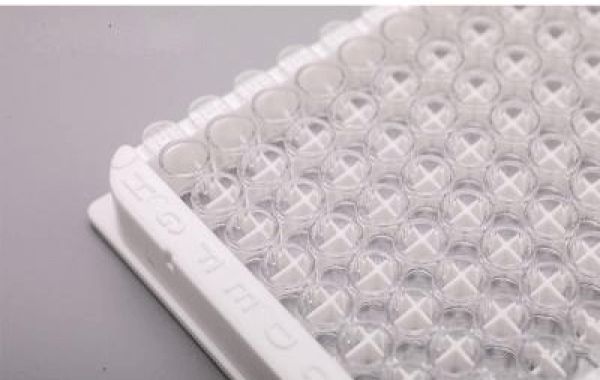ELISA microplates offer a multitude of benefits that make them a workhorse tool in various laboratories for immunoassay experiments. Here's a breakdown of some key advantages:
High-Throughput Analysis
- Multiple Samples: Microplates typically have 96 or 384 wells, allowing researchers to analyze a large number of samples simultaneously. This improves efficiency and saves time when compared to running individual assays for each sample.
- Automation Compatibility:The standardized well format enables the automation of processes such as sample and reagent handling by robotic systems. This increases throughput while minimizing manual labor in large-scale experiments.
Sensitivity and Specificity
- Antibody-Antigen Interaction: ELISAs rely on the highly specific binding of antibodies to their target antigens. This specificity reduces interference from other molecules in the sample, yielding accurate and reliable results.
- Signal Amplification:Many ELISA formats include enzymatic amplification steps, such as enzyme-linked secondary antibodies. This amplifies the target molecule's signal, allowing for the detection of very low concentrations (higher sensitivity).
Versatility and Flexibility
- Diverse Analytes: ELISAs can be used to detect a variety of molecules, including proteins, peptides, hormones, and antibodies. Because of their versatility, they can be applied to a wide range of research areas, including immunology and drug discovery.
- Multiple Formats:There are several ELISA formats available, including direct, indirect, and sandwich ELISAs. Each format is tailored to specific detection requirements and target types, allowing for greater flexibility when designing the assay for best results.
Additional Advantages
- Cost-Effectiveness:Microplates are less expensive than some other analytical techniques. This makes ELISA an affordable option for many labs, especially for high-throughput screening applications.
- User-Friendly: The basic ELISA procedures are simple and can be learned by researchers with some laboratory experience.
- Reliable Results: ELISAs can produce consistent and reproducible data when properly optimized and followed by protocols, which is critical for scientific research.
- Small Sample Volume:ELISA tests typically require small sample volumes. This is useful when working with limited or valuable biological resources.
ELISA microplates provide an excellent balance of high-throughput capability, sensitivity, versatility, and cost-effectiveness. These advantages have propelled them to the forefront of immunoassay research, allowing scientists to detect and quantify various biomolecules in a wide range of biological contexts. Learning how to properly wash ELISA microplates and other useful information is also important.








